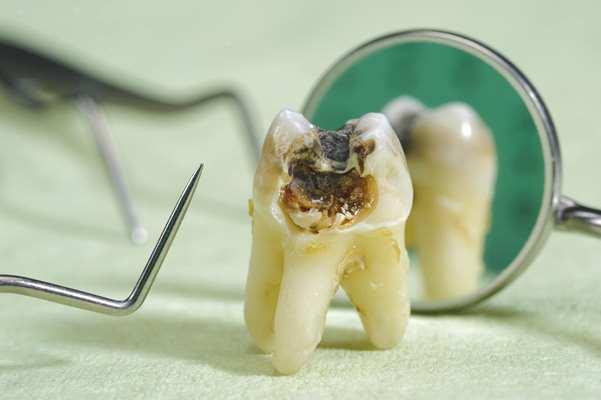Researchers have recently combined two methods for treating dental caries, thereby increasing their antimicrobial effectiveness.

According to research, dental caries is the most common oral disease caused by biofilm and the treatment of which is quite expensive. Fluoride, as a primary anti-cariogenic agent, cannot both sufficiently control biofilm formation and prevent enamel demineralization and may lead to risks associated with excessive fluoride exposure, especially in children. However, recent research has shown that using a combination of FDA-approved iron oxide (ferumoxytol) nanoparticles and stannous fluoride (SnF2), even at lower concentrations, can help prevent both biofilm accumulation and enamel damage. This research has the potential to prevent dental caries and reduce patients' exposure to fluoride.
“Traditional treatment methods often fail to address the complex biofilm environment in the mouth,” senior researcher Dr. Heng Michelle Koo, co-founding director of the Center for Innovation and Precision Dentistry and professor in the Department of Orthodontics at the University of Pennsylvania, said in a press release. “Our combination treatment not only enhances the effectiveness of each treatment, but also does so at a lower dosage, hinting at a potentially revolutionary method for preventing tooth decay in high-risk individuals,” he continued.
The researchers found that Fer can stabilize SnF2 and that it exhibits enhanced catalytic activity when combined with SnF2. In addition, they discovered that fluoride, iron and tin form a protective film on tooth enamel, protecting it from further demineralization. It was also reported that the combination therapy did not disturb the ecological balance of the oral microbiota and had no side effects on surrounding tissues.
Senior author Dr David Cormode, Associate Professor of Radiology at the university, commented: “What excites us most about these results is the multifaceted approach to caries prevention. It's not just about inhibiting bacterial growth or protecting enamel; it is a holistic method that targets both the biological and physicochemical aspects of dental caries.”
“We are pleased with the initial results, but we remain committed to further understanding the complex ways in which Fer and SnF2 interact to enhance therapeutic effect,” added Dr. Koo.
Since Fer and SnF2 are commercially available, the research results can be quickly implemented into clinical practice. However, further research is needed to thoroughly study the mechanisms of interaction between SnF2 and Fer, the process of formation of reactive oxygen species, and the formation and effectiveness of the protective enamel film. “There is potential here not only for dental care, but also for studying how this combination could be targeted against other biofilms,” Dr. Cormod said.
